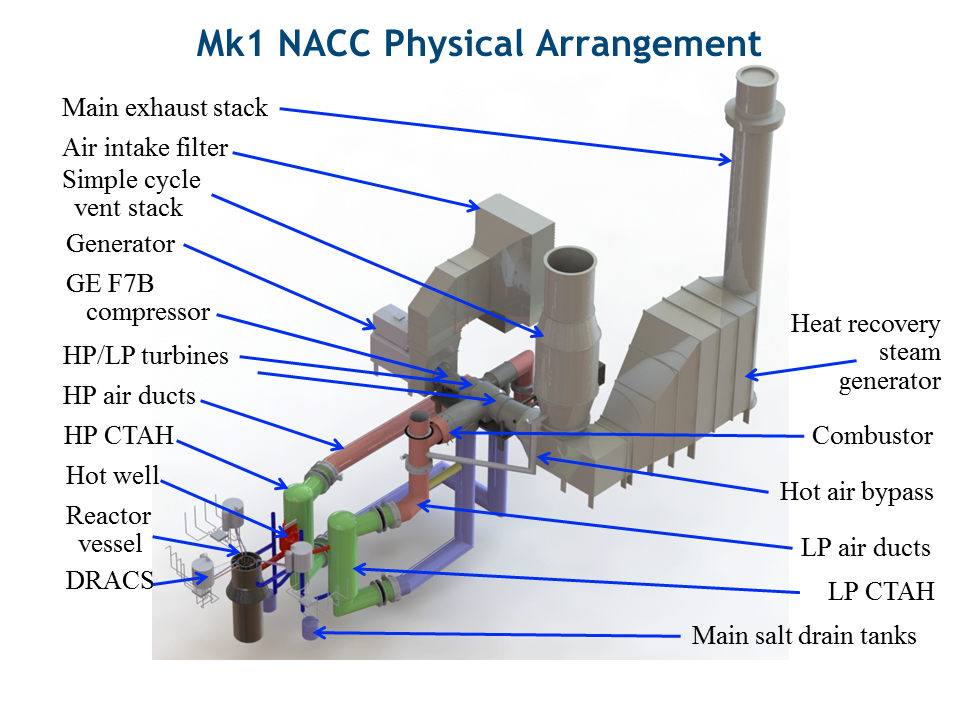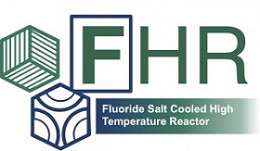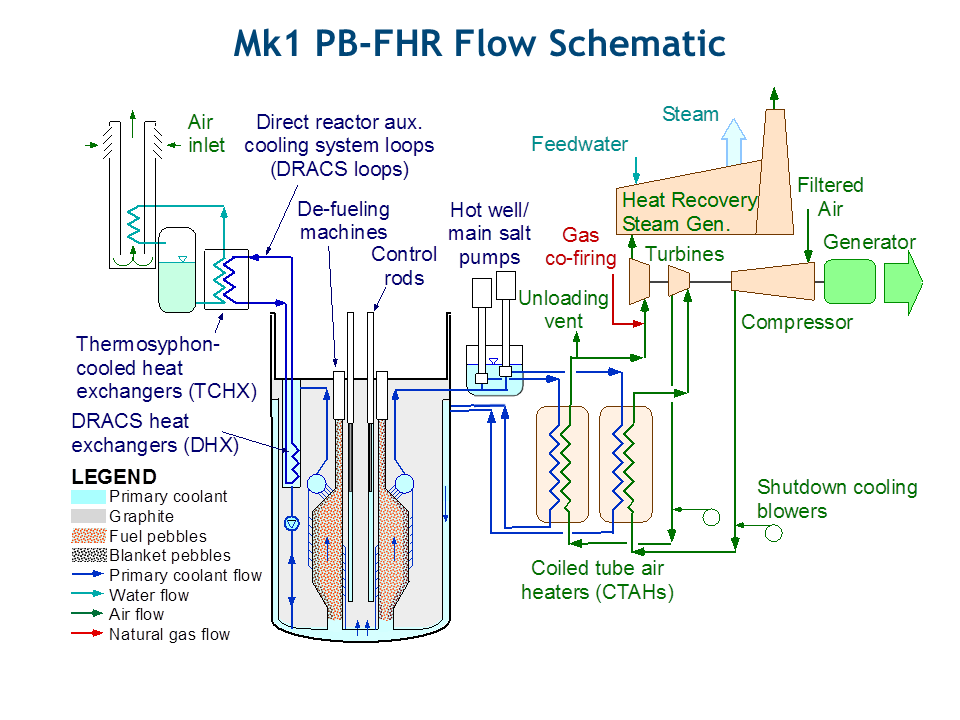The Mk1 PB-FHR
The Mark 1 Pebble-Bed FHR (Mk1 PB-FHR) pre-conceptual design is the latest in a series of studies [2][3][4][5][6][7] to explore potential designs for fluoride salt cooled, high temperature reactors. The Mk1 design effort established four major goals, aimed at exploring further the potential benefits provided by FHR technology:
1) To evaluate how FHRs might be coupled to air Brayton combined-cycle power conversion, currently the dominant technology for new fossil power plants;
2) To provide a detailed design for a passive decay heat removal system, to enable improved safety studies for FHRs;
3) To develop a credible design for an annular FHR pebble-bed core, based upon earlier UCB work on the use of pebble fuels in FHRs, and
4) To evaluate how modular construction methods could be applied to FHRs, keeping all components inside the size range that is rail-shippable and utilizing the same steel-plate composite modular construction methods applied in the Westinghouse AP1000 reactor design.
The new Mk1 design, completed in September 2014, builds upon earlier pre-conceptual design studies. This design further increases confidence that FHRs can be designed to have high intrinsic safety, and that with their higher temperatures FHRs can provide more flexible and valuable services than current reactor technologies.
The result of the Mk1 pre-conceptual design study is a 236-MWth Mk1 PB-FHR that uses a General Electric (GE) 7FB gas turbine, modified to introduce external heating and one stage of reheat, in a combined-cycle configuration to produce 100 MWe under base-load operation, and with natural-gas co-firing to rapidly boost the net power output to 242 MWe to provide peaking power. As with previous FHR pre-conceptual designs cited above, the Mk1 design is also documented in a new UCBTH report (Report UCBTH-14-002), published at the end of September, 2014.
Key attributes of the Mk1 PB-FHR are illustrated in the figures below, and further Mk1 information is available from the links on the right.
|
|
|
An Isometric View of the Reactor Plant and General Arrangement |

Reactor and power conversion system, illustrating how the Mk1 reactor couples to its NACC power conversion system |
Origins of FHR Technology
The concept of fluoride-salt-cooled, high-temperature reactors (FHRs) was originally proposed in 2002 [1]. Since then, the U.S. Department of Energy (DOE) has supported researchers at UC Berkeley, U.S. national laboratories and other universities to study FHRs and to develop the scientific and technical basis to design, license, and construct these reactors. A critical element of this research has involved multiple pre-conceptual design studies, each aimed at developing potential FHR plant configurations to enable the study of FHR safety and economics [2][3][4][5][6][7].
The earlier FHR pre-conceptual studies demonstrated that FHRs can be designed to have passive safety across a wide range of power levels, can use a variety of potential fuel forms, and can supply heat to a range of different power conversion and process heat applications. All of these studies have suggested the potential to achieve attractive economic performance while meeting high standards for reactor safety and security. Also, these studies have indicated that FHRs are likely to be easier to develop and license than liquid-fueled molten salt reactors (MSRs). Thus a major new program initiated by the Chinese Academy of Sciences in 2012 to develop thorium molten salt reactor (TMSR) technology has placed a major emphasis on solid fuel FHR technology.
Based on this earlier work, in 2012 the DOE initiated a new Integrated Research Project (IRP) with the Massachusetts Institute of Technology, UCB, and University of Wisconsin at Madison, to further develop the technical basis to design, develop, and license commercially attractive FHRs. A key deliverable for this IRP was to perform a new pre-conceptual design study, to create an improved basis for performing FHR safety studies and to expand on previous studies for how the higher temperatures delivered by FHRs might be utilized. The result of this effort–the Mark 1 Pebble Bed FHR (Mk1 PB-FHR)–is described here.



